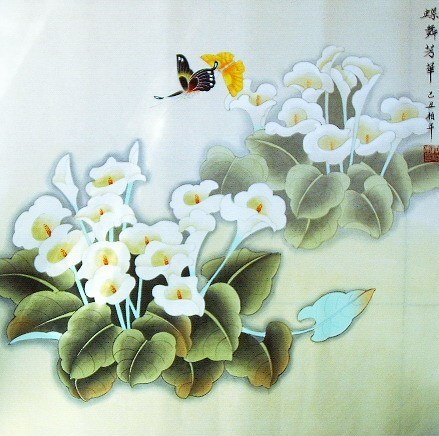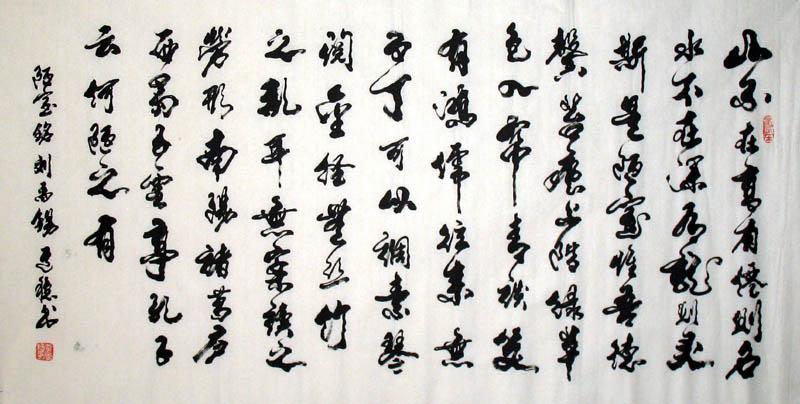The brushes from the province of Anhui, Jiangsu, Jiangxi and Henan are the most famous in the country. while The biggest one was made by a factory in Tianjin city in 1979. It is 157 cm long in total with the 20-cm long hair end, and it weighs as many as five kg. It is able to soak up one kg of ink. On the morning of September 14, 1979, calligrapher Yang Xuanting from Beijing wrote four characters meaning “Long Live the Motherland” on a piece Xuan paper 100 cm long and 150cm wide with this brush to celebrate the 30th founding anniversary of PCR China.
Size of ink brush is generally classified as either big (Da Kai), medium (Zhong Kai) or small (Xiao Kai); most calligraphy is written with a medium-sized brush as it is easy for beginers. The smallest brushes are normally used for writing very small pieces and for fashioning designs of seals. Medium brushes are the most widely used and accepted by public; wielded by a skilled artist, a medium brush can produce a variety of thicknesses of line, from those very thin to fairly thick. while finally the largest brushes are used only for very large pieces, such as calligraphy creations hung in the lobby of hotels.
For the texture of ink brush, it is usually produced to either soft (ruan hao), mixed (jian hao) or hard (ying hao), where certain textures are better in writing certain styles than others.
As a treasure in Chinese history, Traditional Chinese Ink Brush is well-known in the the world, and if you love Chinese culture or Chinese Fine Art, Ink Brush will be the one you will never miss.






